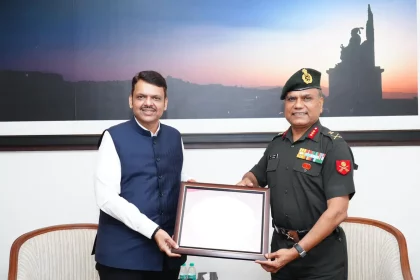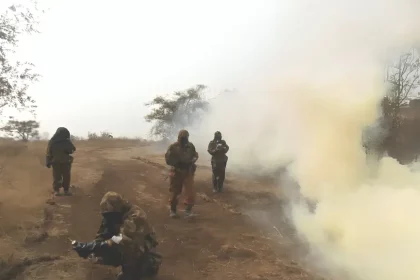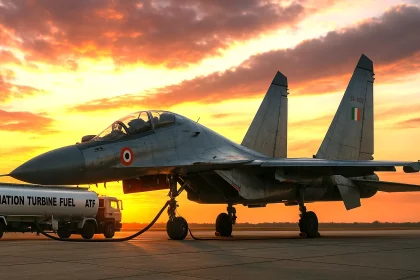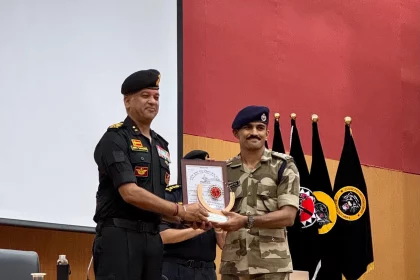Major Apraant Raunaq Singh Makes Supreme Sacrifice in Baramulla
Sena Medal awardee Major Apraant Raunaq Singh laid down his life in Baramulla, Army pays rich tributes.
Lt Gen DS Kushwah Meets Maharashtra CM Devendra Fadnavis to Discuss Military-Civil Fusion and Relief Operations
Army Commander and Maharashtra CM deliberate on security, disaster relief, and veteran welfare.
CME Pune Enhances CBRN Defence Training with Cutting-Edge Infrastructure and AI Integration
CME Pune’s JSTI (CBRN) Boosts Defence Preparedness with AI-Powered Training and Advanced Protective Systems.
Valediction Ceremony Held for Air Traffic Management & Surveillance Courses at ATCOTE
The graduates of these courses are now better prepared to take on responsibilities in Air Traffic Control, Airspace Surveillance, and…
What Fuel Do Fighter Jets Use and How Much Does 1 Litre Cost?
Jet fuels are refined from crude oil through distillation, producing kerosene cuts that are hydrotreated for purity.
Assistant Commandant Aishwarya Upadhyay Emerged as the Best Commando Amomg All Forces in Prestigious NSG Commando Course
CISF Officers Excel in India’s Toughest NSG Commando Training, Aishwarya Upadhyay Honored as Best Commando.






